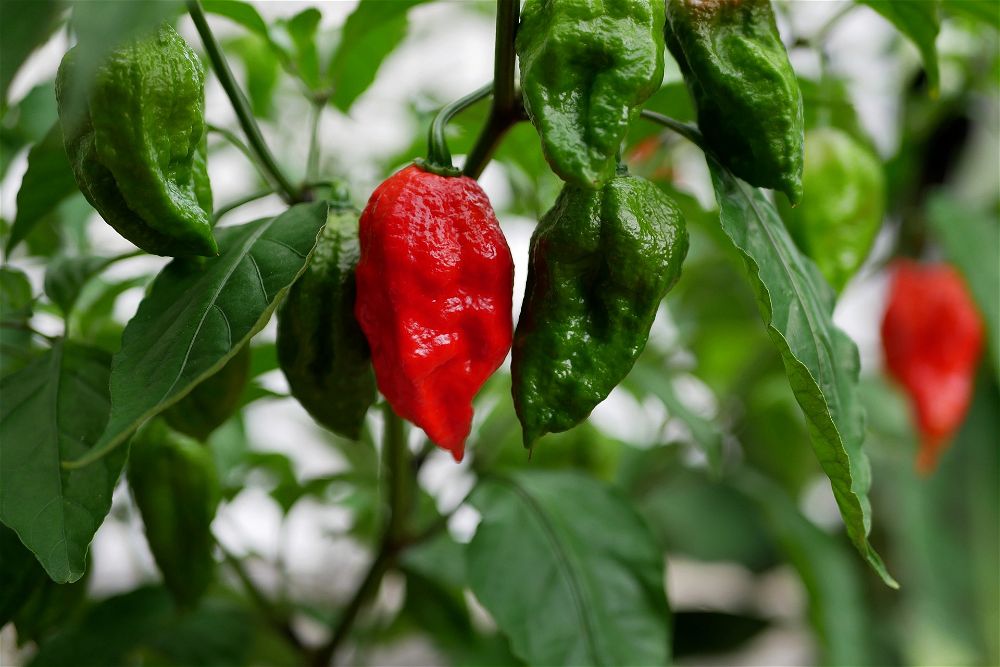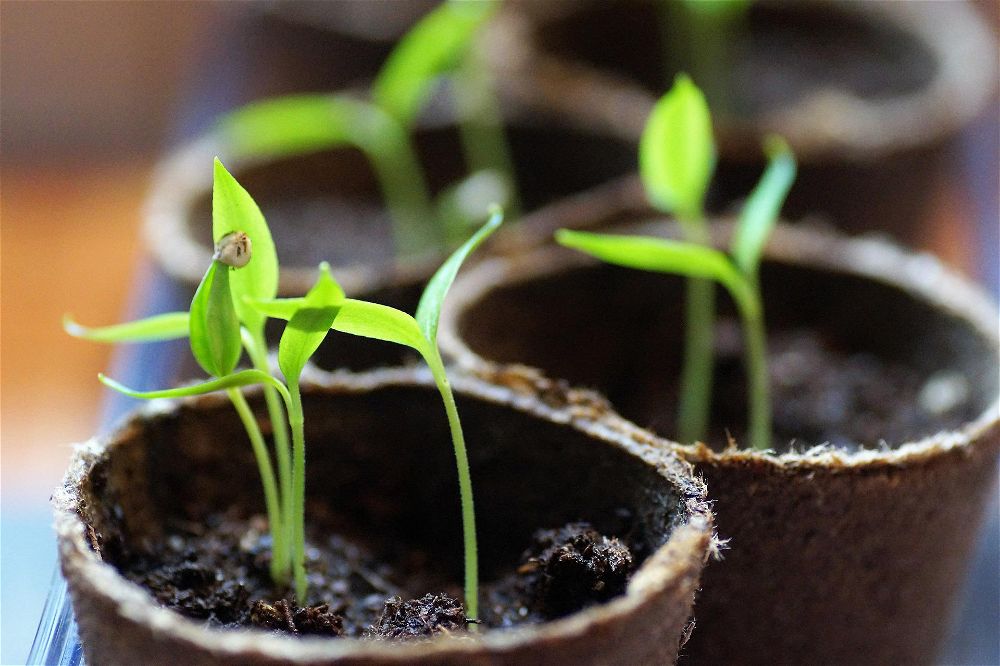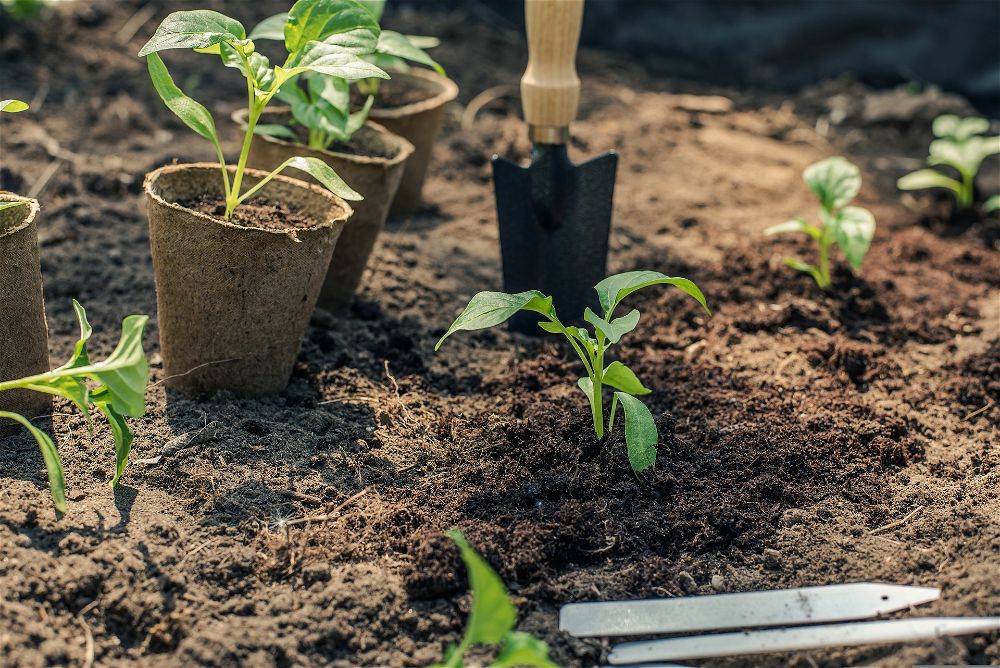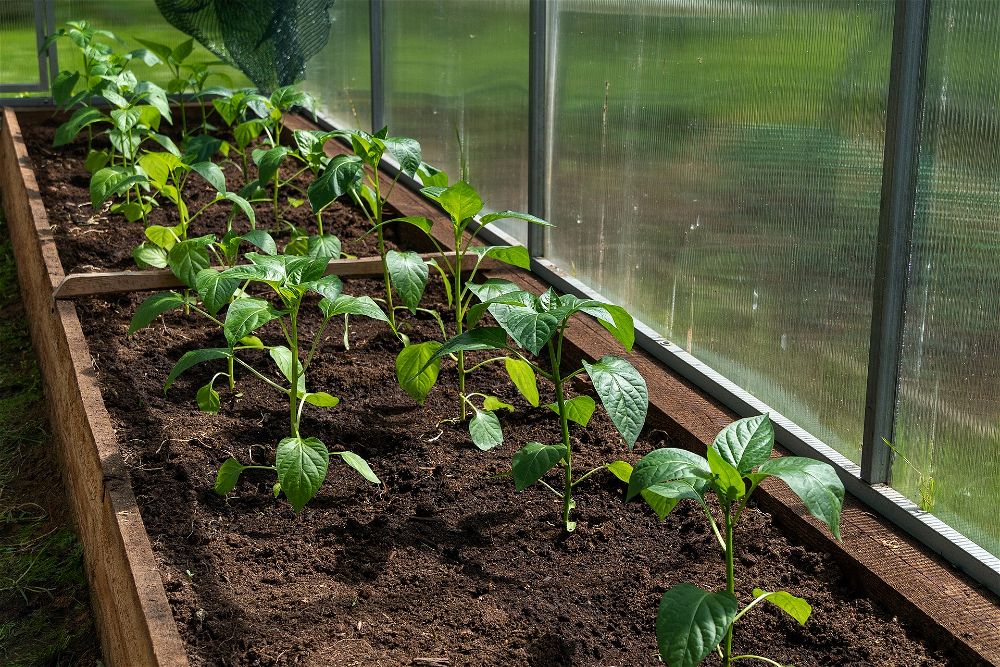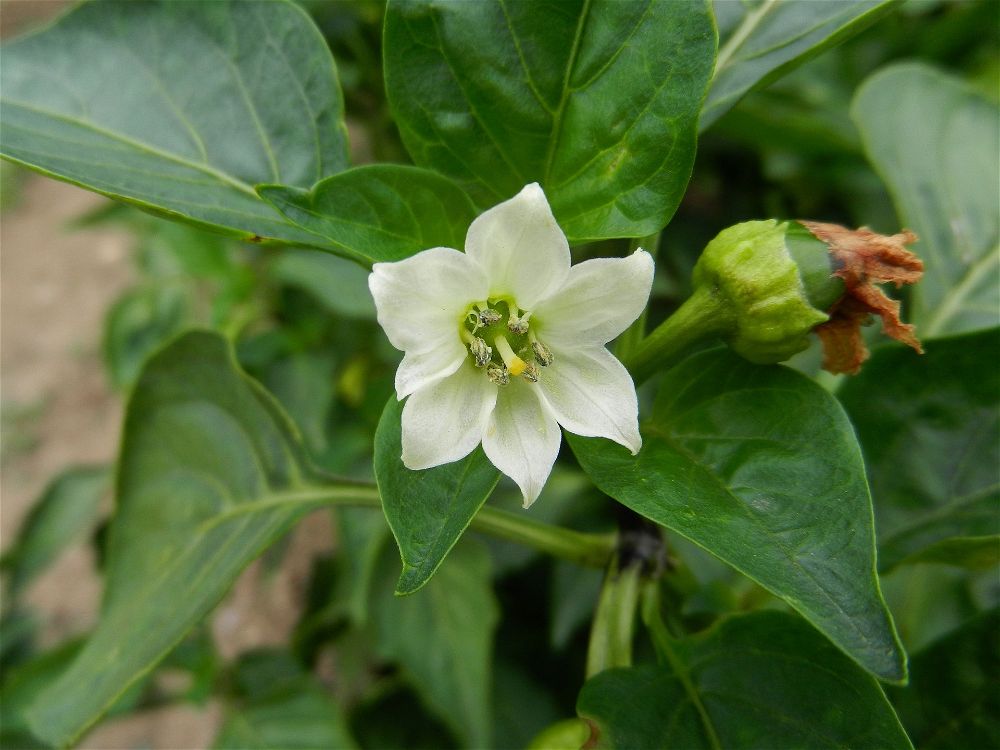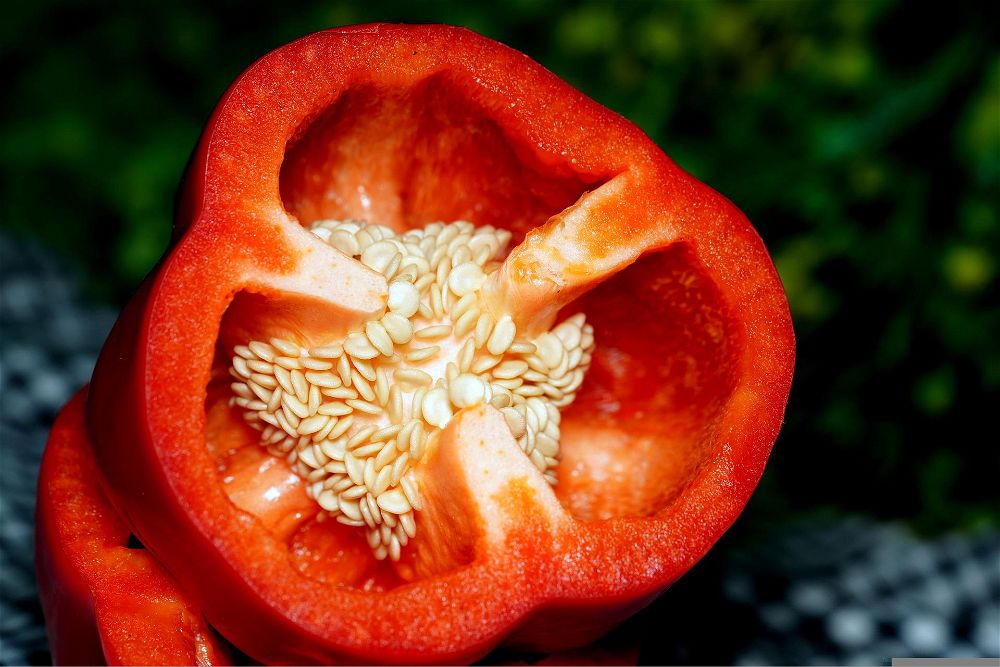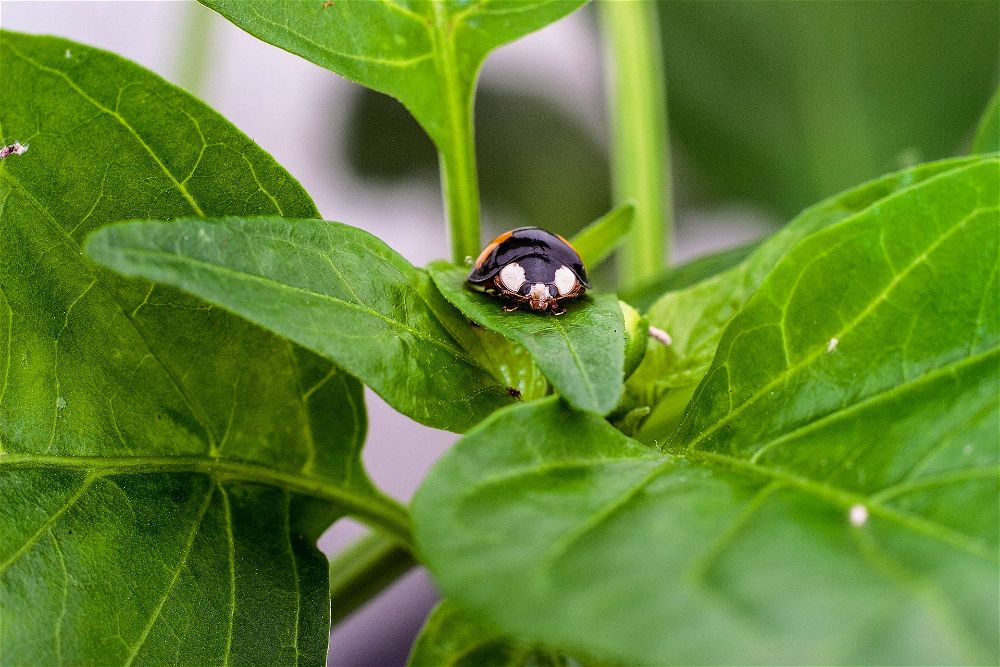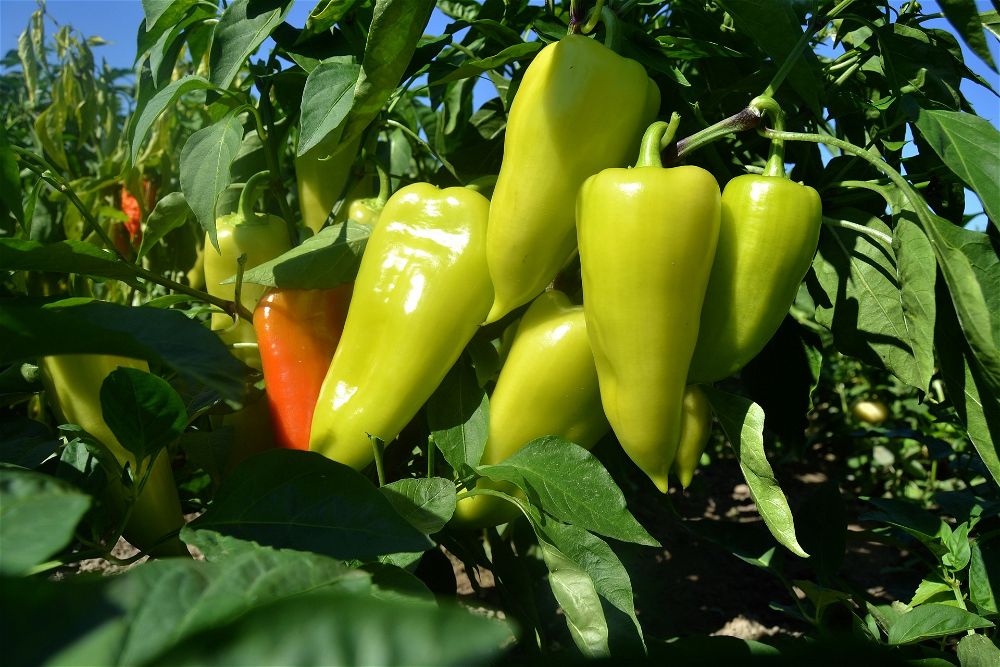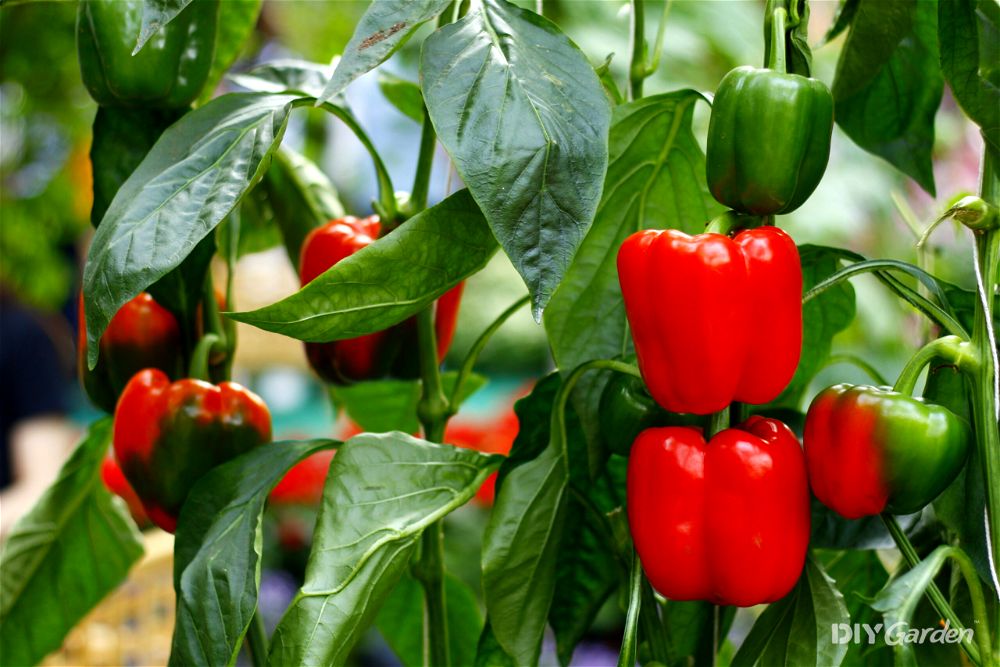
Although native to Mexico and South America, pepper seeds were brought into Europe in the 1400s and quickly became grown all over the continent. Bursting with nutrients and an abundance of health benefits, this much-loved vegetable (which is technically a fruit) is relatively easy to cultivate at home if you follow a few simple steps. Read on to learn exactly how to grow peppers from seeds.
Growing Peppers: A Quick Snapshot
When to Sow – Feb-Apr
When to Plant – May-Jun
When to Harvest – Jul-Oct
Average Yield per Plant – 5-10 peppers
Spacing – 40cm
Depth – 2.5cm
How to Grow Peppers at Home
Since peppers are a tropical plant, you’ll need to make sure that you meet their growing requirements if you want a bountiful harvest:
Warm Temperatures & Full Sun
Pepper plants do best when grown in temperatures between 15-26°C. While they will tolerate cooler temperatures (they’ll survive all the way down to 0°C), these are plants that need consistent warmth in order to be productive. That said, too much heat can also be detrimental – once temperatures rise above 30°C, pepper plants are highly susceptible to heat stress.
Not only do they need the right temperature, but pepper plants require plenty of light too. For the best harvest, choose a location that receives full sun, or at least 6 hours of sun per day.
Rich, Loamy Soil
Although you can use regular multi-purpose compost for your pepper plants, they do best in soil that’s slightly on the loamy or sandy side. This ensures good drainage and also helps to retain warmth, which encourages root growth.
Adequate Spacing
Pepper plants don’t need too much space – about 40cm between each plant should suffice. Growing them in pots is also an option – the final container size that you move them to should be at least 30cm in diameter.
How to Grow Peppers from Seeds
Peppers need quite a long growing season, but they’re also not very cold tolerant. So, in order to ensure a large crop, you need to get your timings right.
Ideally, sow your seeds 6-8 weeks before your last expected frost. Don’t be tempted to sow them too much earlier than this, as your plants will simply end up leggy and root-bound.
While pepper seeds can remain viable for up to 25 years, fresh seeds mean better germination rates, making a new packet of seeds worth investing in. Once you’re ready to get sowing, follow these steps:
- Fill small pots or seed trays with seed compost and mix in a small amount of perlite or vermiculite
- Sow your pepper seeds about 2.5cm deep. If you’re using seed trays, space each seed about 2.5cm apart
- Place your seeds somewhere warm – 18-20°C is ideal for optimum germination. Heated propagators work well for pepper seeds, but you could also place them onto a sunny windowsill and cover your pots/trays with clear plastic. This will help to ensure consistent warmth and humidity
- Pepper seeds take 1-3 weeks to germinate, although some can take up to 5 weeks, so be patient! Once yours have sprouted, remove them from your propagator and place your seedlings somewhere bright
Once your seedlings have two true leaves, move them into 9cm pots. Continue growing them in a warm and bright location – you may need to pot them up once again if their roots start to emerge from the bottoms of the 9cm pots before you’re ready to plant them out into their final location
How to Plant Peppers Outside
Before planting your peppers outside, you’ll need to harden them off. This process takes about 10-14 days, but make sure that you’ve had your final spring frost before getting started.
Once your plants have acclimatised to outdoor conditions, you can plant them out. Choose a sunny but sheltered spot in your garden and make sure that the soil contains plenty of organic matter.
Dig holes that are the same size as the pots that your plants are currently in. Space each hole about 40cm apart. Gently set each plant into its new home and then backfill with soil.
Water your plants well, and then cover them with some fleece if your nighttime temperatures are still dropping below 15°C. As the season progresses, you’ll be able to remove the fleece.
How to Plant Peppers in a Greenhouse
Since pepper plants require a certain level of consistency when it comes to temperature, most gardeners that live in cooler parts of the world choose to grow their peppers in a greenhouse, as opposed to outside.
That said, greenhouses can get pretty chilly too, so don’t plant your peppers out into your greenhouse until temperatures are consistently above 15°C.
Once your pepper plants are ready to move into your greenhouse, follow the same steps as when planting outside, making sure to water your plants in well after you’re done.
How to Plant Peppers in a Pot
If you have limited space in your greenhouse but live somewhere that’s too cold for growing peppers outdoors, then one option would be to grow your plants in pots instead. This way, you can start them off in your greenhouse, or even on a sunny windowsill in your home, at the beginning of the season, but can then move them outside once temperatures start to rise in the summer.
Pick pots that are at least 30cm in diameter and fill them with a high-quality potting compost. Alternatively, you could also purchase grow bags and plant your peppers in there. Two or three plants per bag should suffice. However, make sure that the bags that you choose aren’t too cumbersome to lift if you plan on moving them outside once temperatures heat up.
How to Care for Peppers
While you could simply leave your pepper plants to fend for themselves once you’ve planted them out, you won’t get much of a harvest by doing so. Instead, if you’d like to ensure that you’re soon picking as many peppers as possible, you’ll need to care for your plants in the right way:
Watering Your Pepper Plants
Pepper plants need about 2.5-5cm of water per week. The exact amount will depend on how hot it is – the warmer the weather, the more water your plants will need. Pepper plants grown in pots or bags will also dry out much faster than those that are in the ground, so potted plants will need to be watered more frequently.
To determine if your plants need to be watered, use your finger to check how moist the soil is about 3cm below the surface. If it feels dry, then water your plants.
While it’s vital that your pepper plants never dry out, it’s also important to ensure that you don’t over-water them. Pepper plants hate it when their roots are constantly wet and soggy – this can cause them to rot. If you’ve noticed that the leaves on your plants are starting to droop and turn yellow, then this could be a sign of over-watering or poor drainage.
Feeding Your Pepper Plants
Although pepper plants aren’t particularly heavy feeders, regularly fertilising your plants will help to boost production. However, you’ll only need to start feeding your plants once the first flowers appear.
At this stage, use a high potassium feed once a week – tomato fertilisers are great for this. Homemade comfrey feeds work well too. Either way, make sure that the fertiliser you’re using isn’t too high in nitrogen, as this will encourage leafy growth at the expense of fruits.
Pinching Out Your Pepper Plants
If you leave your pepper plants to grow naturally, they’ll likely end up quite spindly, with very few flowers and fruits.
For full and bushy plants, you’ll need to pinch out the growing tip of each plant once your plants are about 20cm tall. This will encourage the plant to branch out sideways, which will significantly increase your harvest.
Staking Pepper Plants
While pepper plants are usually quite sturdy, a particularly heavy crop can sometimes cause branches to bend and snap.
If you notice that your peppers seem to be weighing the plants down, then insert a wooden stake into the soil next to each plant. Loosely tie the plant to the stake, ensuring that the stake is providing the much-needed extra support for the fruits.
Another option would be to use a wire tomato cage, in the same way you would if you were supporting a tomato plant.
How to Harvest Peppers
Once your peppers are firm, swollen, and glossy, then this is a sign that they’re ready to be picked. Peppers can be picked while they’re still green, although most varieties will change colour as the fruits continue to ripen.
If you wait until your pepper has turned into its final colour (some varieties may turn red while others may turn yellow or orange), its flavour will be much more intense. However, the downside to this is that your overall harvest could be reduced – picking peppers encourages the plant to produce more flowers and pods.
Harvesting individual peppers is easy. Simply use a pair of pruners, or even a sharp knife, to cut the fruit away at its stem. Be gentle as you do so to prevent the fruit from bruising or breaking.
How to Store Peppers
The peppers on your plants will ripen in intervals, meaning that picking them regularly will prevent too much of a glut. This way, you’ll be able to simply store them in the fridge too – they’ll stay fresh for a couple of weeks.
If you’d like to store your peppers longer term, you could chop them up into small pieces and then freeze them. You don’t need to blanch peppers and can cook with them from frozen.
Alternatively, peppers can be cooked into preserves, which can last for several years. Keep reading for more ideas…
How to Prepare & Cook Peppers
There are several ways to prepare peppers. One of the easiest is to use a sharp knife to cut off the stem end, before running that knife around the inside of the flesh to remove the core and seeds. You can then either slice it, dice it, or cut it into rings.
Peppers are used in cuisines from all over the world – it’s an incredibly versatile ingredient. Whether you plan on eating them immediately, preserving them for a later date, or cooking them and freezing them for winter meals, here are some delicious ways to use peppers:
- Roasted peppers preserved in olive oil
- A red pepper chutney
- A Spanish Romesco sauce
- Stuffed peppers
- Pickled peppers
Common Pepper Problems
Some years, your pepper plants may be highly productive and problem-free. However, other years could see you facing a variety of pepper-loving pests and diseases. Here are some of the most common:
- Pepper leaf spot – this bacterial disease is very common in warm, damp, and humid environments, such as a greenhouse in the summer. It spreads easily, causing yellow/green spots on the leaves that soon turn brown, before the leaf falls off. Strong pepper plants can fight the bacteria off themselves but they may need the help of a balanced fertiliser. If the infection is severe, then a natural fungicide can help to control its spread
- Mosaic virus – this virus shows itself as a green and yellow mosaic-like, mottled appearance on the leaves of pepper plants. Growth will be stunted and fruits will turn bumpy. Unfortunately, there’s no treatment, so remove any affected plants immediately. The virus is commonly spread by aphids, so good pest control early in the growing season can prevent it from occurring again
- Blossom end rot – if you notice soft, dark spots on the ends of your peppers, with these soon turning mouldy, then blossom end rot could be the cause. While a lack of calcium is the reason behind it, inconsistent watering is usually what triggers the problem. It’s very common in early fruits and plants will often sort the problem out themselves, although a calcium-rich feed can help with this too
Popular Pepper Varieties to Grow
There are believed to be about 50,000 pepper varieties grown around the world, meaning that there’s plenty to choose from! Some varieties are sweet while others are spicy – here are some favourites of each:
The Best Sweet Pepper Varieties to Grow:
- Lesya – a unique variety with a sweeter-than-average flavour, along with a deliciously crunchy texture
- Shisito – a highly productive Japanese variety that’s popular in appetisers
- Marconi – an Italian heirloom variety, this one is similar in flavour to the classic bell pepper, but slightly longer in shape with thinner walls
- Sweet Banana – compact yet highly productive plants that produce tasty, banana-shaped peppers
- Piquillo – a Spanish variety that has a tart and slightly smoky flavour
The Best Spicy Pepper Varieties to Grow:
- Poblano – sweet and smoky with a very slight heat
- Aji Charapita – although these peppers are very hot, they’re also tiny, meaning that a single fruit is enough to add the perfect amount of heat to a dish
- Death Spiral – an extremely hot variety, but one that also has a sweet fruitiness to its flavour
- Mirasol – fruity, tangy, and slightly acidic
- Tabasco – the pepper that gives the famous sauce its name, enabling you to make your very own version
Conclusion
Whether you snack on them raw, cook them into a delicious meal, or preserve them for later, peppers are an incredibly versatile ingredient, making them a useful one to grow in your garden. Give your pepper plants the right amount of attention and care and they’ll reward you with their fast-growing, highly-productive nature.
FAQ
Can I grow peppers from fresh pepper seeds?
Yes, you can use seeds from a fresh pepper to grow new pepper plants. However, only do this with seeds from ripe peppers – meaning those that have turned yellow or red. Green peppers are technically unripe with underdeveloped seeds, which will affect germination rates.
How long does it take to grow peppers from seed?
How long it takes to grow peppers from seed will depend on the variety that you’re growing. Some varieties will be ready to pick in 90-100 days, whereas others will need at least 150 days.
How many peppers do you get per plant?
The number of peppers that you get per plant depends heavily on the variety that you’re growing. However, when it comes to the average bell pepper, you can expect to harvest between 5-10 fruits. Other varieties may produce less, but there are also plenty that produce much, much more!
Are pepper seeds easy to grow?
Some pepper seeds, such as Shisitos and Jalapenos, are easy to grow. They germinate quickly and can tolerate cooler temperatures. Others, such as the Carolina Reaper, are much harder to grow – they’re more finicky about growing conditions and need a longer growing season.
